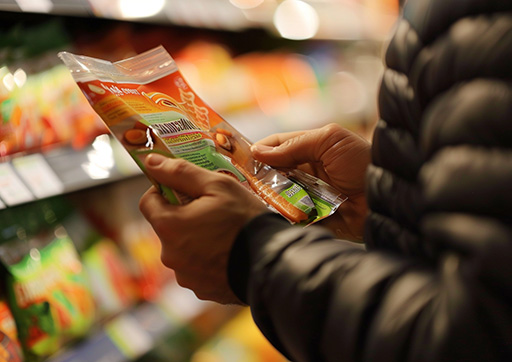Coping with Fructose Malabsorption [Effective Strategies]

We will also discuss the potential causes and effective strategies for managing this condition, including the role of food intolerance. From dietary implications to practical tips and low-fructose recipes, we will provide the tools to cope and lead a fulfilling life daily.
Understanding Malabsorption
Fructose malabsorption occurs when the small intestine cannot absorb fructose, a naturally occurring sugar in many fruits, vegetables, and sweeteners. When the body cannot absorb fructose, it passes into the undigested large intestine, where gut bacteria ferment it.
This fermentation process can produce symptoms such as bloating, abdominal pain, and diarrhea. It is important to note that this differs from hereditary fructose intolerance, a rare genetic issue that affects the enzyme aldolase B, responsible for breaking down fructose. While fructose intolerance is relatively common, hereditary fructose intolerance is much rarer.
The Science
To understand fructose malabsorption, it is essential to grasp the basic science behind how fructose is absorbed in the small intestine. Typically, fructose is transported into the small intestine cells through a protein.
Once inside the cells, the enzyme aldolase B converts fructose into glucose and other molecules. These glucose molecules are then transported out of the small intestine cells and into the bloodstream, where they can be used for energy.
However, the fructose absorption process is impaired in individuals with fructose malabsorption. This can happen due to a deficiency of aldolase B or a reduced expression of the GLUT5 protein, limiting fructose absorption. As a result, undigested fructose passes into the large intestine, where gut bacteria ferment it, producing gas, bloating, and other gastrointestinal symptoms.
Breath tests are often used during assessment. These tests measure the levels of hydrogen gas in the breath, which is a byproduct of bacterial fermentation of undigested fructose. Researchers are also exploring other potential causes of fructose malabsorption. Liver issues can also disrupt fructose absorption, leading to related symptoms. By
Identifying Potential Causes
Fructose malabsorption can have various potential causes, and identifying the root cause is crucial for effective management. One potential cause is small intestinal bacterial overgrowth (SIBO). In individuals with SIBO, there is an abnormal overgrowth of bacteria in the small intestine, which can interfere with the absorption of fructose. This can lead to other gastrointestinal symptoms such as gas, bloating, and diarrhea.
The liver plays a crucial role in fructose metabolism, converting fructose into glucose and other molecules. If the liver is not functioning optimally, it may be unable to effectively process fructose, leading to malabsorption and the associated symptoms.
It is worth noting that fructose malabsorption has been linked to irritable bowel syndrome (IBS), a common gastrointestinal problem characterized by abdominal pain, bloating, and changes in bowel habits. While the exact relationship is still being studied, clinical evidence suggests that individuals with IBS are more likely to have it compared to healthy patients. This highlights the importance of exploring potential causes, such as fructose consumption and management, in the context of overall gut health.
By identifying potential causes, such as small intestinal bacterial overgrowth or liver issues, individuals can implement targeted dietary and lifestyle interventions to manage their symptoms effectively. Understanding the underlying issues is the key to developing a comprehensive plan.
Recognizing Symptoms
Recognizing the symptoms is the first step toward effective management. Gastrointestinal symptoms, such as bloating, abdominal pain, and diarrhea, are common indicators. These symptoms can vary in severity, with some individuals experiencing mild discomfort while others may have more severe episodes. It is important to note that the symptoms can overlap with those of other gastrointestinal conditions, such as irritable bowel syndrome (IBS).
Physical Indicators and Common Complaints
Physical indicators and common complaints can provide valuable insights for managing the condition. Bloating, a sensation of fullness or tightness in the abdomen, is a common symptom experienced by individuals. This bloating is often accompanied by abdominal pain, which can range from mild discomfort to severe cramping.
Diarrhea is another common complaint characterized by loose, watery stools. On the other hand, some individuals may experience constipation, which is characterized by difficulty passing stools or infrequent bowel movements. It is important to note that the symptoms can vary from person to person, and the severity of symptoms may also fluctuate over time.
Recognizing these physical indicators and common complaints is essential for addressing fructose malabsorption and implementing appropriate management strategies.
How Fructose Malabsorption Impacts Daily Life
Fructose malabsorption can affect various aspects of well-being. Individuals may find themselves constantly worrying about their symptoms and the potential triggers in their diet. This constant vigilance can lead to increased stress and anxiety, impacting overall mental health and quality of life.
Moreover, it can also disrupt everyday activities, such as meal planning, grocery shopping, and food preparation. Those with fructose malabsorption often need to be mindful of high-fructose foods, reading food labels, and avoiding certain ingredients to manage their condition effectively.
Social events can also become challenging. Attending parties or dining out can be difficult, as many food options may contain high fructose ingredients or be prepared in a way that triggers symptoms. This can lead to isolation, anxiety, and feeling left out in social situations.
Managing it effectively involves not only dietary modifications but also addressing the condition’s impact on daily life. By seeking support from healthcare professionals, dietitians, and support groups, individuals can develop coping strategies and find ways to live fulfilling lives while managing their condition effectively.
Dietary Implications
Dietary intervention is critical to managing fructose malabsorption. A low FODMAP diet, which stands for fermentable oligosaccharides, disaccharides, monosaccharides, and polyols, can effectively reduce fructose intake, and minimize symptoms. FODMAPs are a group of carbohydrates that can trigger gastrointestinal symptoms.
The low-FODMAP diet eliminates high-fructose foods and other high-FODMAP foods for some time, followed by a reintroduction phase to determine individual tolerances. This personalized approach allows individuals to identify their dietary triggers and develop a long-term management plan. Individuals can minimize symptoms and maintain a healthy, balanced diet by incorporating low-FODMAP and low-fructose foods.
Foods to Avoid
Avoiding high-fructose foods is essential. Here are some familiar high-fructose food sources to avoid:
- High fructose corn syrup, often added to processed foods and beverages.
- Corn syrup, a sweetener commonly found in candies and baked goods.
- Soft drinks, including regular soda and fruit-flavored carbonated beverages.
- High-fructose fruits, such as watermelon, mango, and dried fruits
Individuals can reduce their fructose intake and minimize symptoms by eliminating these high-fructose foods from their diet. It is important to note that the severity can vary from person to person so that individual tolerances may differ. Working with a healthcare professional or dietitian can help develop a tailored dietary plan.
Understanding Food Labels
Understanding how to read food labels is crucial. Here are some key points to consider:
- Look out for ingredients that indicate the presence of fructose, such as high fructose corn syrup or corn syrup.
- Table sugar, or sucrose, is composed of glucose and fructose. While glucose is generally well tolerated, fructose may cause symptoms in some individuals. However, the fructose in table sugar is typically balanced by an equal amount of glucose, which can improve fructose absorption in some individuals.
- Glucose, a sugar well absorbed by the small intestine, can help enhance fructose absorption. Foods or drinks that contain glucose, such as glucose syrup, may be better tolerated by others.
By carefully reading food labels, individuals can make informed choices and select low-fructose options. It is important to note that food labels may use different terms to indicate the presence of fructose, so it is essential to familiarize oneself with these terms and ingredients.
Practical Tips for Managing Fructose Malabsorption
Managing fructose malabsorption effectively requires practical strategies that go beyond dietary changes:
- Consider a fructose elimination diet under the guidance of a healthcare professional or dietitian to identify individual triggers and tolerances.
- Incorporate suitable foods into the diet, such as low-fructose fruits, vegetables, non-fructose sweeteners, and low-FODMAP carbohydrates.
- Explore using xylose isomerase, an enzyme that can help break down fructose and improve fructose absorption.
By implementing these practical tips, individuals can navigate daily life more easily and manage their symptoms effectively.
Incorporating Suitable Foods
Incorporating suitable foods into the diet is essential for effective management. Here are some food options that are generally well-tolerated:
- Low-fructose fruits, such as berries, kiwi, and citrus fruits
- Vegetables with lower fructose content, such as spinach, zucchini, and bell peppers
- Grains like rice, quinoa, and gluten-free options, which are low in fructose.
- Protein sources, such as eggs, poultry, fish, and lactose-free dairy products
- Non-fructose sweeteners, such as glucose, maple syrup, and stevia, can be used as alternatives to high-fructose sweeteners.
By incorporating these suitable foods and planning well-balanced meals, individuals can enjoy a varied diet while minimizing symptoms. It is essential to consult with a healthcare professional or dietitian for personalized dietary advice based on individual tolerances and dietary goals.
Meal Planning and Preparation
Meal planning and preparation are crucial for managing fructose malabsorption:
- Plan meals, considering the fructose content in the chosen ingredients.
- Prepare meals using fructose-free or low-fructose alternatives, such as low-FODMAP recipes or fructose-friendly ingredients.
- Be mindful of condiments, dressings, and sweeteners, as they may contain high fructose ingredients.
- Utilize low-fructose recipes and meal ideas, which can provide inspiration and guidance for balanced, fructose-friendly meals.
- Practice portion control of high-fructose foods to manage fructose intake effectively.
By incorporating these meal planning and preparation strategies, individuals can enjoy delicious, nutritious meals while minimizing symptoms and managing their condition.
Coping During Social Events and Eating Out
Coping during social events and dining out can be challenging, but it is possible with the right strategies:
- Communicate your dietary needs and restrictions to hosts, family, or friends when attending social events. This can help ensure that suitable food options are available.
- Research menus ahead of time when eating out, looking for low-fructose options or customizable dishes.
- Opt for low-fructose choices, such as grilled meats, salads, or steamed vegetables, when dining out.
- Sip on water or choose low-fructose beverages, such as herbal tea or water infused with fruit slices, during social events.
- Consider bringing fructose-friendly snacks or dishes when attending events so you have suitable options available.
By employing these coping strategies, individuals can still enjoy social events and dining out while managing their symptoms effectively.
Recipes for a Low-Fructose Diet
Incorporating delicious, low-fructose recipes into the diet can make managing fructose malabsorption more enjoyable. Here are some recipe ideas for breakfast, lunch, dinner, snacks, and desserts:
Breakfast Ideas
- Oatmeal made with lactose-free milk, topped with nuts, and low-fructose fruits like blueberries.
- Quinoa breakfast bowls with low-fructose fruits, such as strawberries, kiwi, and raspberries.
- Scrambled eggs with spinach, feta cheese, and herbs for a high-protein, low-fructose option.
- Yogurt parfaits are made with lactose-free yogurt, seeds, and low-fructose fruits like kiwi or citrus.
- Low-fructose smoothies made with spinach, cucumber, almond milk, and a small number of low-fructose fruits, such as berries or citrus.

Lunch and Dinner Recipes
- Grilled chicken salad with low-fructose vegetables like lettuce, cucumber, and cherry tomatoes.
- Quinoa and vegetables with low-fructose ingredients, such as bell peppers and zucchini.
- Baked fish, such as salmon or cod, with roasted sweet potatoes and steamed low-fructose vegetables.
- Turkey lettuce wraps filled with low-fructose condiments, such as lettuce, cucumber, and herbs.
- Stir-fried tofu with low-fructose veggies like bell peppers, broccoli, and snap peas, served with brown rice or quinoa.
Snacks and Desserts
- Snacks on nuts, such as almonds or walnuts, are low in fructose and healthy fats.
- Enjoy fructose-friendly desserts made with low-FODMAP fruits, such as berries or citrus, and suitable sweeteners like maple syrup or glucose.
- Indulge in fructose-free sweets like dark chocolate or coconut milk-based ice cream.
By incorporating these low-fructose recipes into meals and snacks, individuals can enjoy flavorful, satisfying food while managing their symptoms effectively.
Additional Strategies
In addition to dietary changes, other strategies can contribute to managing fructose malabsorption effectively. Consider the following:
Physical Activity
Engaging in regular physical activity has been shown to support gut health and can help improve symptoms. Physical activity promotes healthy digestion by enhancing gut motility and reducing constipation.
It also helps reduce stress, which can exacerbate gastrointestinal symptoms. Incorporating activities such as walking, jogging, yoga, or swimming into daily routines can significantly improve individuals’ gut health and overall well-being.
Dietary Supplements
Certain dietary supplements can be beneficial for individuals with fructose malabsorption. Here are some examples:
- Probiotics: Probiotic supplements containing beneficial bacteria can help improve gut health and support digestion. They may also aid in the breakdown of fructose.
- Digestive Enzymes: Enzymatic options, such as xylose isomerase, can assist in the breakdown of fructose, improving fructose absorption and reducing symptoms. These enzymes can be taken in supplement form under the guidance of a healthcare professional.
- Glutamine: Glutamine is an amino acid that plays a vital role in intestinal health. It can help improve intestinal function, reduce inflammation, and promote gut healing.
- Magnesium: Magnesium supplements may alleviate constipation, a common symptom of fructose malabsorption, by promoting healthy bowel movements and relaxing the digestive tract muscles.
- Vitamin D: Vitamin D is crucial for immune system regulation and gut health. Supplementing with vitamin D may help improve gut health in individuals.
It is essential to consult with a healthcare professional or dietitian before starting any dietary supplements, as individual needs and tolerances may vary.
Is It Possible to Lead a Normal Life with Fructose Malabsorption?
Living with fructose malabsorption may require dietary management and lifestyle adjustments, but leading a daily, fulfilling life is possible. Individuals can effectively manage their symptoms and enjoy various foods while avoiding high-fructose triggers.
Conclusion

Additionally, incorporating suitable foods, meal planning, and preparation, as well as coping during social events and eating out, are essential practical tips. Engaging in physical activity and considering dietary supplements can also contribute to overall well-being.
BioScan can assist in managing fructose malabsorption by identifying potential causes, such as intestinal or liver issues. This information contributes to a comprehensive understanding, providing health practitioners with possible interventions to present to individuals coping with fructose malabsorption.
